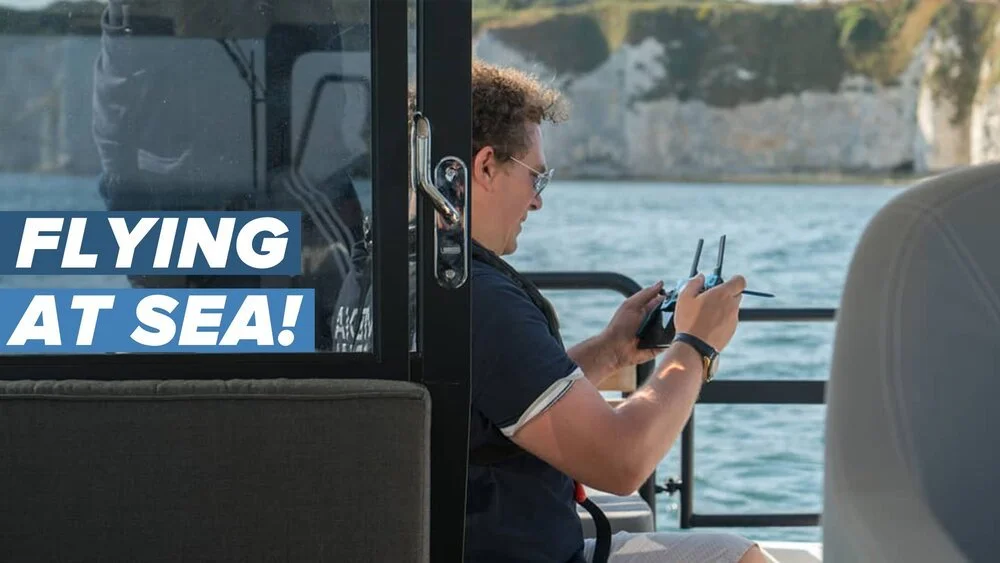How to fly drones safely at sea
One of our favourite places to fly drones is over the sea. If you’re worried about the idea of flying an expensive UAV above water, rest assured that it’s one of the safest places to fly.
Most of the risk with flying a drone from a boat comes from takeoff and landing; you’ll typically want to hand-launch and hand-catch, but basic awareness will keep you safe.
Here are our tips for flying over water.
Plan your flights carefully
You don’t want to be caught short and run out of battery. Give yourself a battery buffer and land with plenty of juice left in the tank. This will enable you to land without rushing, which will inevitably increase the risk of an accident occurring. Depending on weather conditions, we land at between 30-60% battery life.
Practice hand-launching and hand-catching on land
If you can do it on land, you can do it at sea! Though the boat you’re stood on might be rocking slightly, we often find that our attention is so fixated on safely catching the drone that proprioception takes over elsewhere and we keep our balance without even thinking about it. Build confidence on land, so you’re more adept at catching drones at sea.
Turn off all sensors on the drone
Object avoidance sensors will cause your drone to move away from your hand as you try to hand-catch it. For landings, turn all your drone’s sensors off so it’s possible to catch without putting up a fight.
It’s hard to judge distances at sea
Be extra vigilant while flying your drone at sea. Remove your distance limit and set ‘return to home’ to hover. It’s likely you’re on a moving vessel, so you don’t want your drone trying to land in a location you’re no longer at!
Be wary of marine traffic
Communication is key to successful at-sea flights. Brief, brief, and brief again. Contact every relevant person, from the local Queen’s Harbour Master to nearby ports and marinas.
It’s not necessarily a legal requirement to communicate with absolutely everyone, but companies operating below your flight path will appreciate the courtesy, as they’ve undoubtedly encountered careless casual pilots countless times. And you never know: that appreciation might transpire into a desire to work with you!
Relax!
Trust in the skills you’ve developed on dry land. Most problems arise when you get nervous and let fears cloud your judgement and sense of control. Be confident.— you’ve got this.
Wear protective equipment
Consider upping your PPE usage when flying at sea — especially if you’re hand-catching and hand-launching. We typically wear thick gloves that reach to the elbow, in case a propellor goes where it shouldn’t. Also bear in mind that it might be a lot colder out at sea. Doubly so if you get wet. Have something warm to wrap up in to hand.
Consider your drone photography accessories
A graduated neutral density filter can really help while shooting at sea. The contrast between the sea water and the horizon is often very sharp. Regular ND filters can also be ideal for easing the intensity of sunlight catching on the crests of waves. You don’t want to end up with footage dotted with little blown-out spots!
The Drone Code still applies
But you already knew that, right?
Get a full team
At minimum, try to assemble a qualified pilot, a spotter, and a camera operator. Divvying up responsibilities will ensure superior results and better safety. You’ll also have more people who can react to any complications that arise.
Communication with the captain
If you’re on a boat, make sure the captain understands your plans and emergency procedures. Their assistance will be paramount to capturing the best shots and reacting to problems efficiently and safely. Also, regardless of whether you’re on a vessel or a platform, triple-check that rescue teams know your whereabouts.






